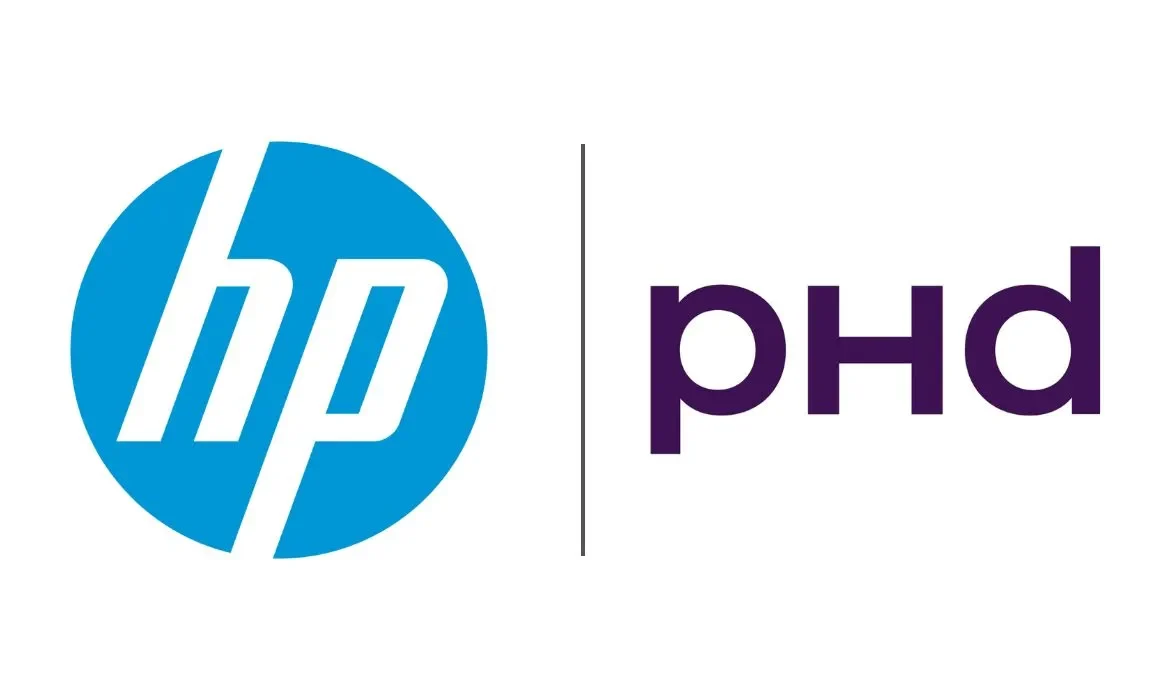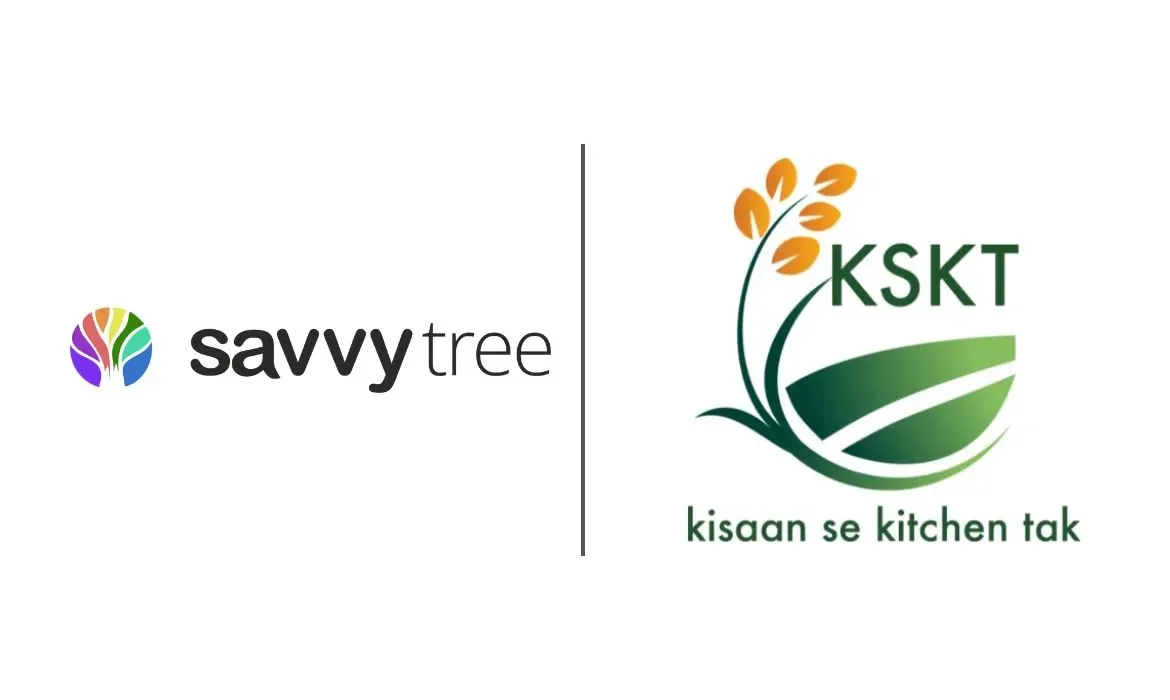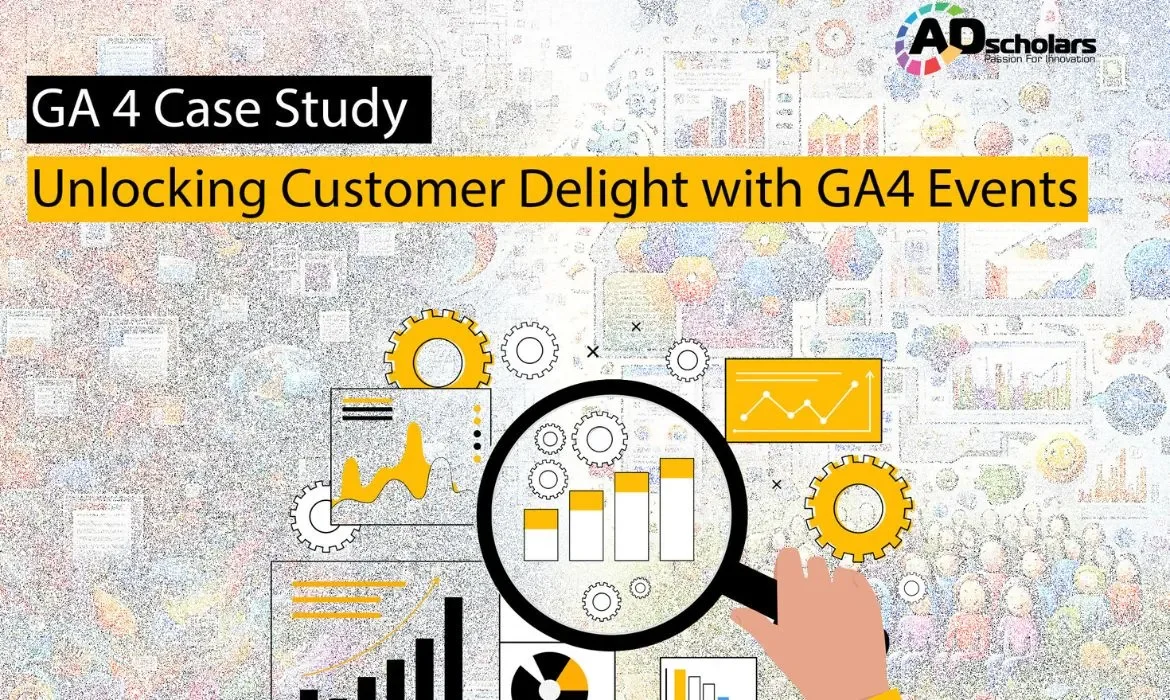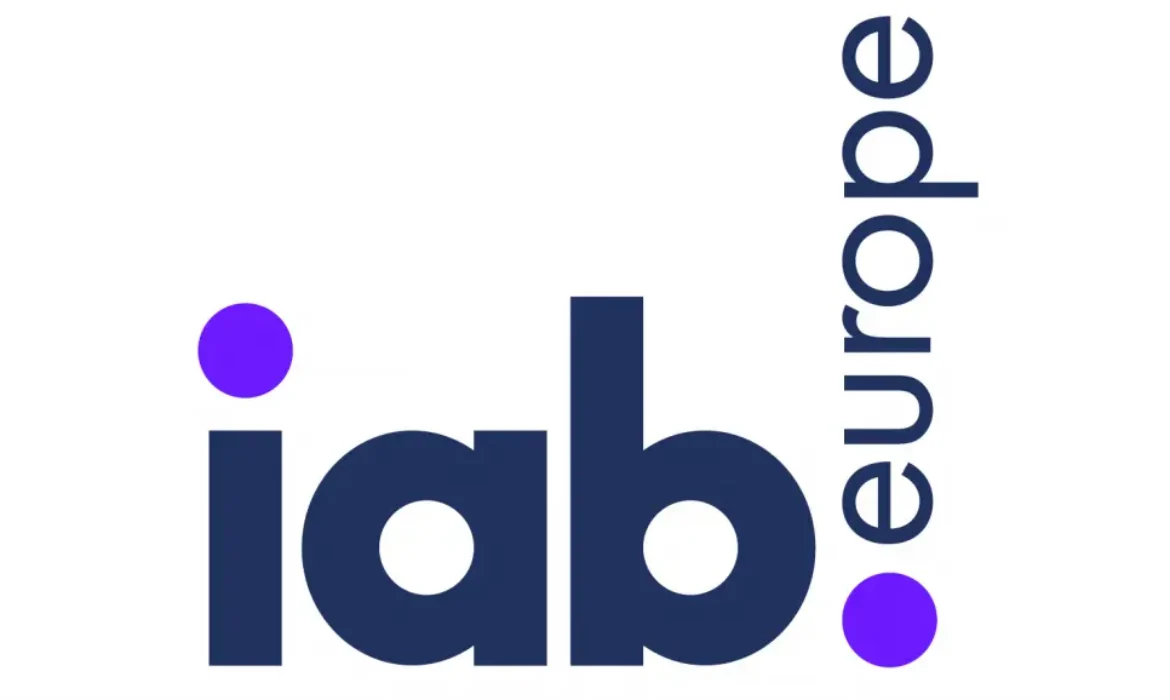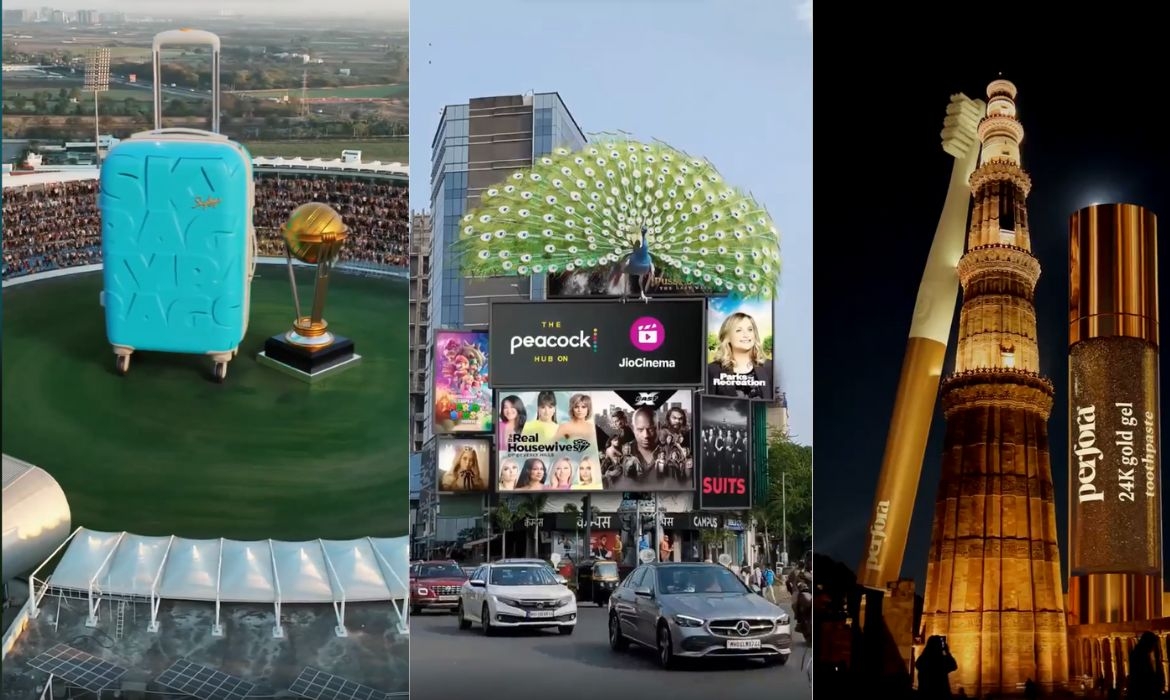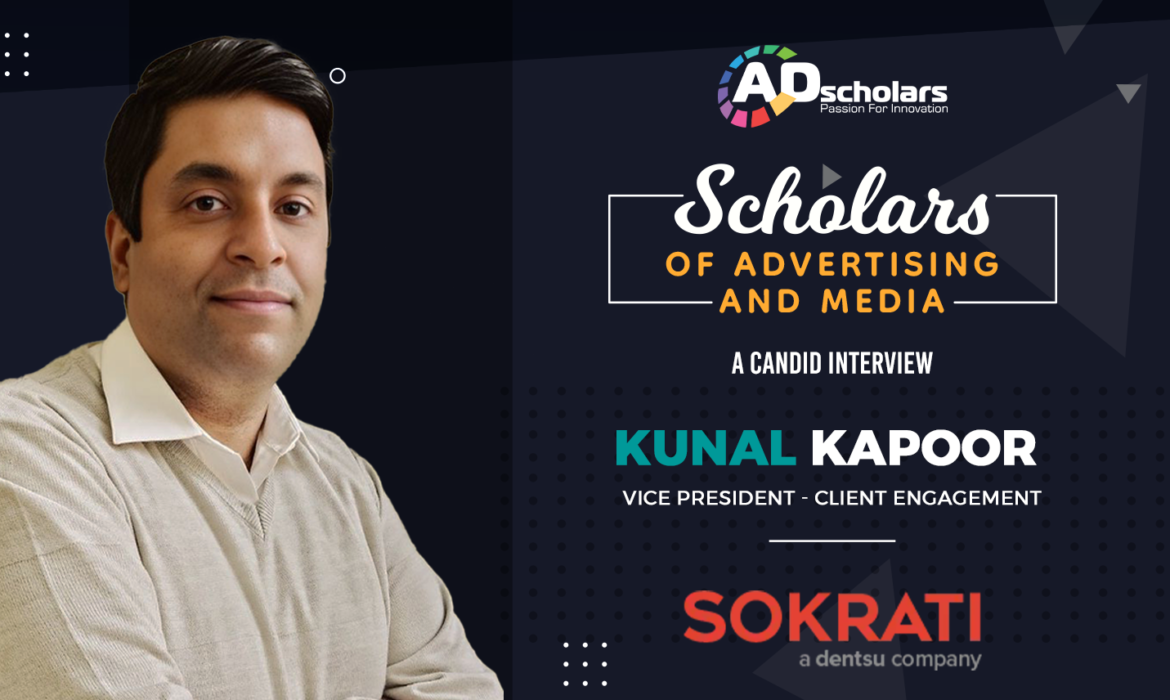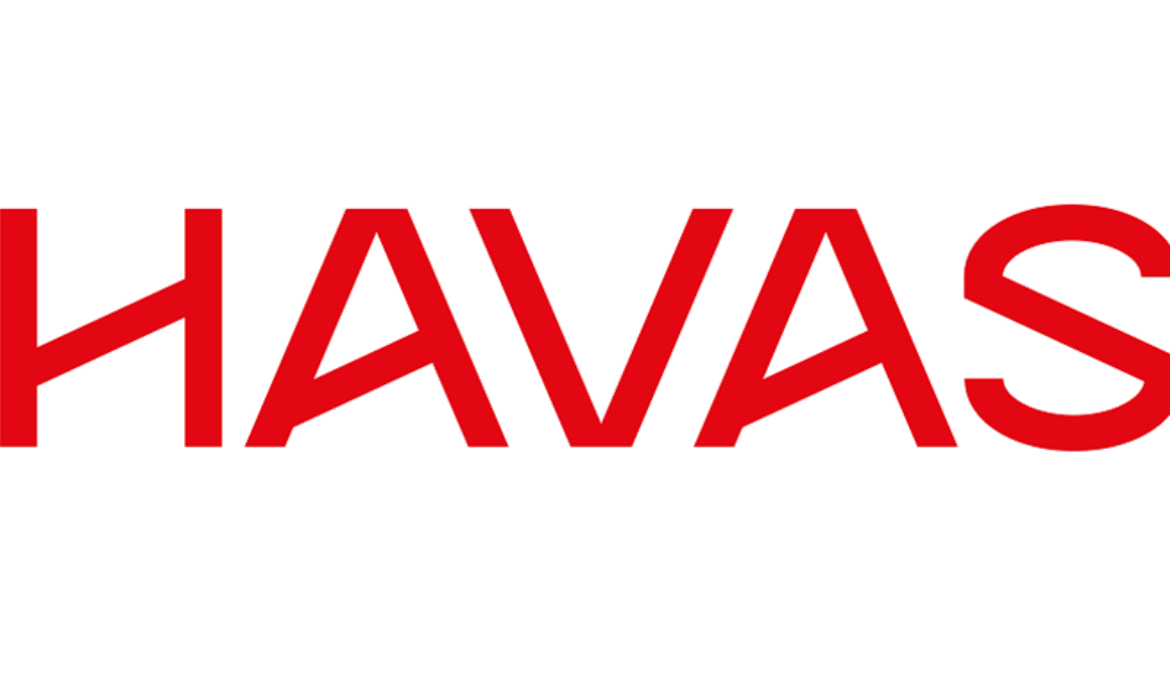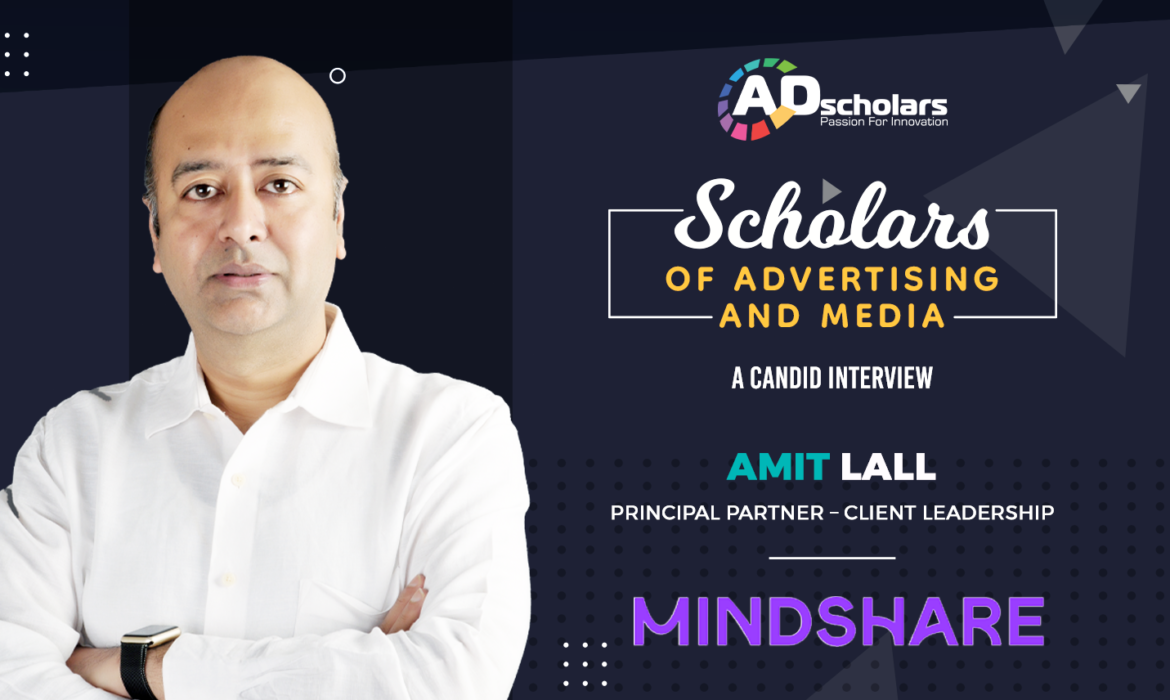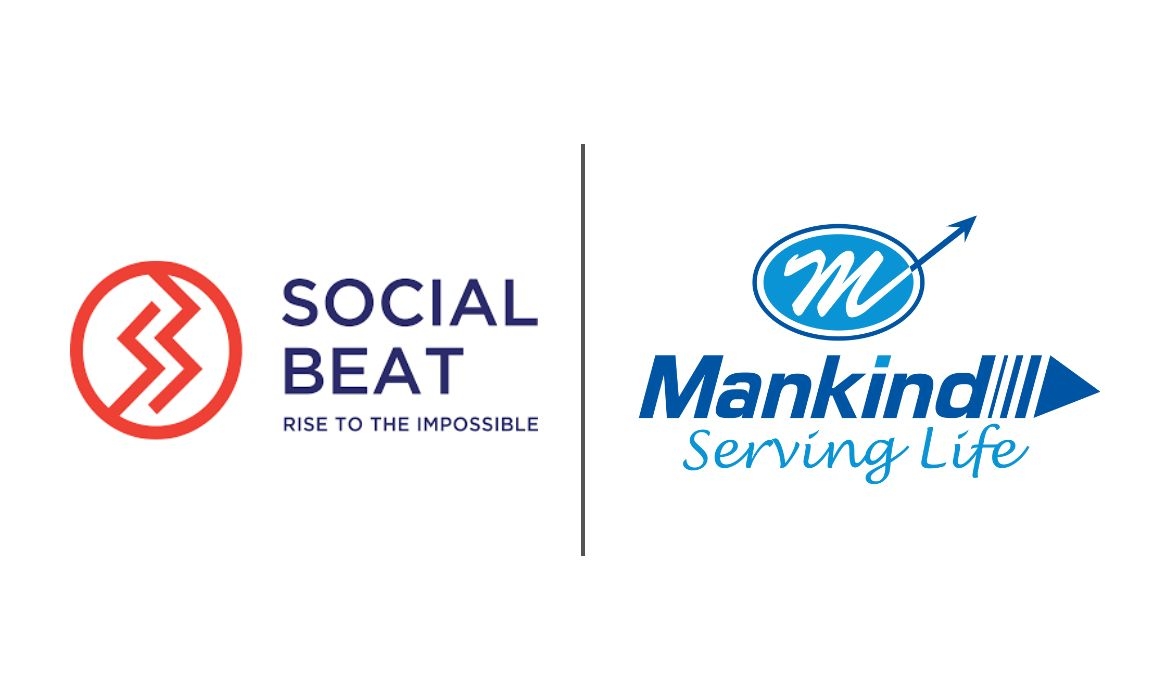HP’s Global Media Account Retained By PHD
PHD has retained HP’s global media account following a competitive review. The firm will still be in charge of global traditional media planning, buying, and strategy. HP will handle its own digital media buying and has a sizable in-house media team. In 2023, HP invested $194 million in media globally, with digital channels accounting for 69% of the expenditure. Following a three-month evaluation, PHD, an affiliate of Omnicom Media Group, was able to keep the contract. Participating media agencies and specialty stores were split between the holding companies.
PHD’s media responsibilities
It was awarded the entire global HP business in 2017 after the technology company transferred its digital media buying account from Essence. Since 2009, PHD has been in charge of HP’s traditional media buying. HP selected PHD because of its global reach, its capacity for strategy and planning, its emphasis on accountability and transparency, and its adaptable model and competence in collaborating with internal teams. HP has operations in over 170 nations. Antonio Lucio returned to HP in November as chief marketing officer, and he took on this role soon after.
PHD’s most recent victory with HP
After acquiring Grupo Bimbo, Uber, and McCain Foods in the previous year, PHD now has HP as its most recent victory. This puts it at the top of the Campaign’s most recent US Agency Rankings table. In September, Marks took over as CEO of PHD Worldwide, succeeding longstanding CEO Philippa Brown, moving up from the same position in EMEA.
Read More: Wavemaker Wins Media Mandate for $20 million Allianz account
Here’s what they said
As reported by Campaign US,
PHD’s Agency as a Platform model “delivers the talent, tools, and technology that will drive better outcomes for HP, while also enabling the flexibility to wrap around and support our in-house team,” according to Freddie Liversidge, global head of media at HP, in a statement shared with Campaign US.
He continued,
This partnership combines the best aspects of the agency world with the closeness and transparency of an in-house team to advance the business goals of both the brand and the wider business.
Guy Marks, CEO, of PHD Worldwide, said in a statement provided to Campaign US,
Over the course of a relationship that began in 2009, HP and PHD have been partners in navigating disruption. Having concluded an extensive competitive review with the decision to continue that partnership, HP has given us the best possible vote of confidence as the preferred agency for their ongoing transformation. Our collaboration will continue to evolve, as we bring the connected intelligence of the global PHD network, supported by the scale and infrastructure of Omnicom Media Group, to augment HP’s in-house team, delivering future-ready marketing strategies that translate marketplace challenges into business growth.
Read More: GroupM Bags INR 200 Crore Domino’s Pizza Account’s Media Mandate
Savvytree Wins Digital Marketing Mandate for Kisaan Se Kitchen Tak
Savvytree has taken over Kisaan Se Kitchen Tak‘s digital presence. Delhi-based Savvytree, a digital marketing agency, has revealed that it has acquired full digital marketing responsibility for Kisaan Se Kitchen Tak (KSKT Agromart). KSKT is a business that promotes fresh, pure, and naturally grown agricultural products.
Savvytree takes over KSKT’s digital marketing mandate
Savvytree will oversee KSKT Agromart’s digital marketing initiatives as part of the partnership, which will include social media management, content creation, and performance marketing. Through this strategic alliance, KSKT Agromart hopes to reach a wider audience and increase awareness of the value of utilizing natural and pure farming methods.
What does Kisaan Se Kitchen Tak do?
Kisaan Se Kitchen Tak sets itself apart by supporting farmers’ causes, empowering them in agriculture, and encouraging healthy living through their produce. The group actively promotes income growth for farmers while opposing the use of hazardous chemicals in farming. In addition to guaranteeing the best produce for customers, KSKT Agromart promotes environmental health. It uses organic and sustainable farming methods.
Read More: DoubleVerify Expands Media Authentication on Meta
The organization acknowledges the important role that women play in agriculture. Furthermore, it gives them the resources and information they require to become independent members of the farming community. This benefits the economic standing of women and enhances the agricultural environment.
KSKT’s business strategy
Apart from spearheading Kisaan Se Kitchen Tak’s digital marketing initiatives, the company’s business strategy encompasses the establishment, procurement, or leasing of various business divisions. These are tailored to particular products, customer segments, sales channels, and geographical regions. Together with shared functional teams like marketing, finance, and IT, these discrete business units are connected by a single backend supply chain.
Commitment to agriculture
KSKT Agromart is committed to transforming the agricultural landscape. It looks to implement contemporary business practices that align with its core values of empowerment, sustainability, and purity. This is demonstrated by its collaborative and integrated approach.
Read More: VICE Media Group Names Rafael Lavor As Head of Strategy
From Puzzling Pages to Smiling Clients: Unlocking Customer Delight with GA4 Events
What is GA?
Google Analytics (GA) is a powerful tool that has been the go-to solution for website and app analysis for years. It tracks user behavior by measuring pageviews, sessions, and other traditional metrics, providing valuable insights into how users interact with your digital property.What is GA4?
GA4, the next generation of Google Analytics, marks a significant shift in how we analyze user behavior. Instead of focusing on pageviews, GA4 takes an event-based approach. Every user interaction, from button clicks and video plays to form submissions and app screen views, is recorded as an event, painting a much richer picture of the user journey.Key Differences between GA and GA4:
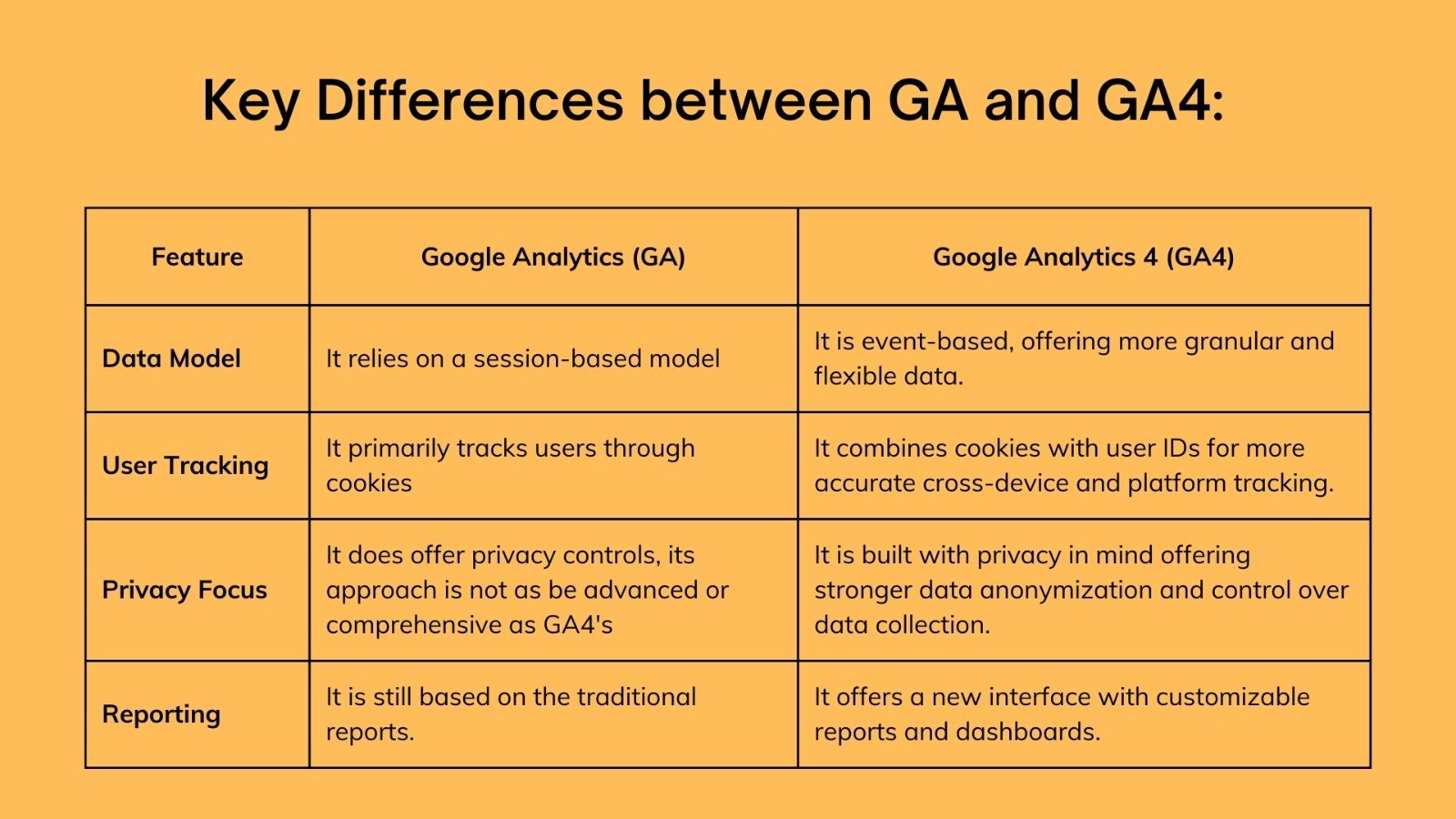
Why should you care about GA4 events?
This event-based approach unlocks a treasure trove of insights that were previously hidden from view:- Pinpoint User Engagement: Identify the exact elements driving engagement, like blog posts sparking social shares or features leading to higher conversions.
- Discover Hidden Gems: Unearth content users devour but traditional analytics neglect, allowing you to optimize your digital experience for maximum impact.
- Understand Micro-conversions: Track micro-interactions like video previews or carousel swipes, providing a deeper understanding of the user journey before the final conversion.
- Tailor Content and Campaigns: Use detailed event data to personalize content and target campaigns based on specific user behaviors and interests.
Forget Pageviews, Embrace the Power of Events:
Read More: AdTechStats 2023 By ADScholars: Understanding the Ad Trends To Strategize Advertising in 2024.
Case Study 1: E-commerce Emporium – From Wishlists to Wallets with GA4 Events
Meet “Trendy Treasures,” a struggling online fashion retailer drowning in abandoned wishlists. Armed with GA4, we tracked “Add to Wishlist” and “Wishlist Removal” events. Surprise! Users loved adding items to their wishlists but rarely converted them to purchases. We suspected indecisiveness and launched a targeted email campaign offering limited-time discounts on wishlisted items. Presto! Conversions from wishlists skyrocketed by 20%, and our client’s smile could light up a runway!Case Study 2: Travel Titans – Tailoring Journeys with GA4 Insights
Picture “Adventure Horizons,” a travel agency struggling to attract young explorers. Using GA4’s custom events, we tracked “Blog Post Read Time” and “Off-the-Beaten-Path Tour Quote Download.” Analyzing parameter data, we discovered their most engaged readers devoured articles about budget-friendly adventures. We pivoted their content strategy, highlighting niche destinations and affordable tours. The result? A 30% increase in quote downloads for those categories, and a client ecstatic about finally connecting with their target audience!Case Study 3: Service Savvy – Streamlining Efficiency with GA4 Events
Think of “Tech Tigers,” an IT service provider battling overwhelmed agents and frustrated customers. With GA4, we tracked “Live Chat Initiate” and “Ticket Resolution Time.” Shockingly, many users initiated chats for simple questions already answered in their FAQ section. We created targeted chat prompts and linked relevant FAQs, reducing chat volume by 35% and freeing up agents for complex issues. A client thrilled with faster service and happier customers? You bet!Beyond Data Dazzling: Turning Insights into Actionable Magic
Data is like raw dough – powerful but needing the right touch to become a delicious treat. Here’s how to transform your GA4 insights into client-pleasing action:- Speak the language of business, not data science: Present findings in clear, concise language, highlighting their impact on business goals. No jargon, just results!
- Be the data-driven strategist, not just the reporter: Analyze your findings and propose data-backed strategies for website optimization, content creation, and targeted campaigns. Show your clients you’re not just reporting, you’re strategizing for success!
- Celebrate the journey, not just the destination: Regularly report progress and results. Track key metrics, show improvements, and celebrate successes together. Transparency builds trust and keeps clients smiling.
GA4: Your Gateway to Client Bliss
In a data-driven world, GA4 events offer the power to make sense of it all, and more importantly, turn insights into client-satisfying action. Embrace this event-based revolution, unleash the data wizard within you, and watch your Indian business soar. Remember, the future of marketing lies not in pageviews, but in the intricate dance of user actions captured through GA4 events. So, grab your data wand, put on your client-satisfaction cloak, and start weaving your digital marketing magic – the GA4 stage awaits!Read More: Unlocking the Power of AI in Digital Marketing: A Comprehensive Guide

Ali Masthan
Google Search | Display Ads | DV 360 | GAM 360 | Paid Social | Media Planning and Strategy
With over 12 years of experience in media planning, strategy, and content marketing, Ali Masthan is a digital marketing veteran passionate about helping businesses build ethical and sustainable customer relationships. He believes that transparency, respect, and quality content are key to earning trust and achieving long-term success. Follow Ali for insightful tips and strategies to navigate the ever-evolving digital landscape.
IAB Europe Releases First Edition of Pan-European Retailer Digital Advertising Capability Map
IAB Europe, the leading European industry association for the digital advertising and marketing ecosystem, has released the first edition of its Pan-European Retailer Digital Advertising Capability Map. The first of its kind, this map showcases the digital advertising capabilities of European retailers in the grocery, beauty, fashion, marketplace, home, and DIY categories. It was created by an industry association.
Digital Advertising Investment in Europe
By 2027, digital advertising investment in Europe by Retail Media is projected to reach €25 billion (£21.4 billion). It’s well-known that Retail Media is revolutionizing the digital advertising landscape by giving companies new ways to connect with customers and leverage first-party data. With Retail Media Networks (RMNs) continuing to grow in popularity, it is more important than ever for brands to be able to assess their investment opportunities accurately. Thus, to anticipate this need, IAB Europe created the Retailer Capability Map.
What is the Pan-European Retailer Digital Advertising Capability Map?
With detailed information about the in-store, off-site, and on-site opportunities provided by European retailers, this map is an invaluable tool for media buyers. Crucial details about the various targeting and measurement options are also provided. The aim is to furnish media purchasers with the necessary data to conduct comparative analyses of retailer offerings throughout Europe.
With tens of local and regional retailers collaborating with various ad tech solution providers, Europe is by far the most fragmented region globally. Using a common set of criteria to assess on-site, off-site, and in-store offerings, measurement capabilities, and partnerships across various verticals, the map is a vital tool that aids all entities involved in retail media in navigating this complex ecosystem.
Read More: IAB Tech Lab Launches Two Working Groups for AI and Privacy Sandbox
Retail Media Resources from IAB Europe
The Map represents a critical turning point in IAB Europe’s plan to standardize and educate more about Europe’s retail media environment. A Retail Media Advertising Product Matrix, A 101 Guide to Retail Media, Retail Media Definitions, and A Retail Media Glossary are additional tools to promote knowledge of and investment in retail media.
Here’s what they said
Maurits Priem, VP of Monetization Europe & Indonesia, Ahold Delhaize said,
At Ahold Delhaize we are surfing The Third Wave together with our advertisers, aiming to raise the bar in advertising. As a front runner in omnichannel retail media we support the role of IAB Europe when it comes to professionalising our industry step by step. We welcome this first version of the Retailer Capability Map as a valuable next step and relevant tool for media buyers.
Laura Badea, Global Digital Commerce Partner, Wavemaker stated,
The Pan-European Retailer Capability Map is a foundational piece of work, developed by IAB Europe as part of their commitment to drive a unified vision and standards to underpin the fast growth of retail media space. It comes at a critical moment in the shaping of retail media as a key element in the strategic channel mix in Europe.
Read More: IAB Tech Lab Launches Working Group to Update India’s DPDPA 2023
CGI Advertising: Pioneering Future of Marketing or Merely a Social Media Fad?
Technology integration has always been a driving force behind change in the dynamic world of advertising. In the realm of marketing, captivating images can do wonders for capturing customers’ attention and making a lasting impression. Computer-generated imagery (CGI) is one such invention that has drawn interest from both consumers and marketers. It is a state-of-the-art technique that allows imagination to come to life in advertisements. CGI has completely changed how people relate with brands, from mesmerizing product advertisements to enticing brand marketing.
The unseen hero of the advertising industry, computer-generated imagery (CGI) subtly intervenes to realize seemingly unattainable goals. When utilized skillfully, computer-generated imagery (CGI) has the power to transform a commercial from ordinary to spectacular, producing moments that stay with the audience long after the TV is turned off. But the question remains: Is CGI advertising a precursor of things to come in the marketing industry, or is it just another passing social media fad?
What is CGI advertising?
CGI OOH, also known as CGOOH or “Faux-out-of-home” (FOOH), is a new marketing strategy that is about to be implemented. The use of computer-generated imagery (CGI) in advertising has become indispensable. CGI has been widely adopted by the OOH sector to create unique social media advertising. By using CGI in advertising, companies can now communicate their messages in more imaginative and eye-catching ways, drawing viewers in and increasing interaction.
The goal of CGI marketing material has changed over time, striving for a startling degree of realism and organic content imitation. Moreover, marketing directors and brand managers support these fictitious initiatives. CGI is the term for the skill of producing realistic visual content with the use of cutting-edge graphics and sophisticated computer tools. All media, including social media, online videos, and traditional television, have a proper role in advertising. CGI marketing initiatives, which are frequently witty, lighthearted, and designed to go viral, have become very popular on social media.
CGI in Advertising
This trend has its own implications and questions regarding production for design-build firms and brands that want to install physically. One important thing to keep in mind about CGI marketing campaigns is how easily they can be reposted and shared again without any additional information or credit. Because original sources and creators are only occasionally mentioned, viewers might conclude that these campaigns were actually created and put into action in real life. Digital content can make it difficult to distinguish between fact and fiction because it is vulnerable to the same issues that help fake news proliferate. Additionally, over time, it may increase brand credibility and trust.
Read More: Virtual Product Placement: The Newest Upstart in TV. Find Out How!
Rise of CGI Advertising
Nowadays, CGI is widely used in the majority of the media, entertainment, TV broadcast, and advertising sectors. Through digital renders, advertisers can produce realistic, high-quality virtual worlds and objects that aren’t actually there in the real world. On the other hand, it enables the construction of objects that are not real and might be too costly or difficult to capture on camera or photograph. Real-world environments or objects can be created much more quickly and affordably with the aid of CGI. These can be used in films, animated movies, and video clips; they can also be 2D, 3D, or even CGI animated.

Image credit- Buzzfeed
For a considerable amount of time, computer-generated imagery (CGI) has been used to bring various magical and imaginary characters to life. It is currently a standard component of the movies and television shows that people watch on a daily basis. However, it’s also critical to comprehend how CGI is currently used in other sectors, such as enterprise, corporate engineering, and advertising. To help brands and corporates better connect with their customers and clients, CGI is being used as a tool for product design and the creation of advertising content. Simultaneously, the objective is to produce better and more affordable goods. The use of CGI in content creation has grown significantly, and this trend is expected to continue as more and more content creators choose to use it instead of traditional media.
How CGI seamlessly integrates into various advertising channels
CGI frequently looks effortless as it appears on numerous advertising channels, almost like a magic trick. It all comes down to how adaptable and simple it is to integrate. CGI doesn’t just work in isolation; it collaborates with other media types to create a cohesive, powerful message.
- Television Commercials
- Social Media Advertising
- Digital Billboards
- Mobile and Web Apps
Television Commercials
One area where CGI really shines is in TV commercials. Here, it either takes center stage or collaborates with live-action video to produce breathtaking visual effects. Commercials with such striking visuals have the power to stick in the minds of viewers and connect with a large audience while condensing complex ideas into a digestible format.
Social Media Advertising
Today’s social media is flooded with CGI-enhanced advertisements. Amidst the abundance of content, computer-generated imagery (CGI) adds a level of sophistication that draws the user in, whether it is an animated explainer video or a 3D product demonstration. Increased brand awareness and a higher CTR are correlated with visual engagement.
Digital Billboards
Modern digital billboards frequently have animated CGI that visually appealingly conveys the brand’s message. Because of the lifelike CGI presentation, this type of advertising—also known as digital-out-of-home (DOOH)—leaves a lasting impression.
Mobile and Web Apps
Numerous companies include specialized online or mobile applications in their customer engagement plans. By offering interactive features or graphics that improve user experience and promote brand loyalty, CGI improves these platforms. Advanced images can make people stay on a page longer, which increases the opportunity for businesses to interact with their audience.

Image credit- Render3quick
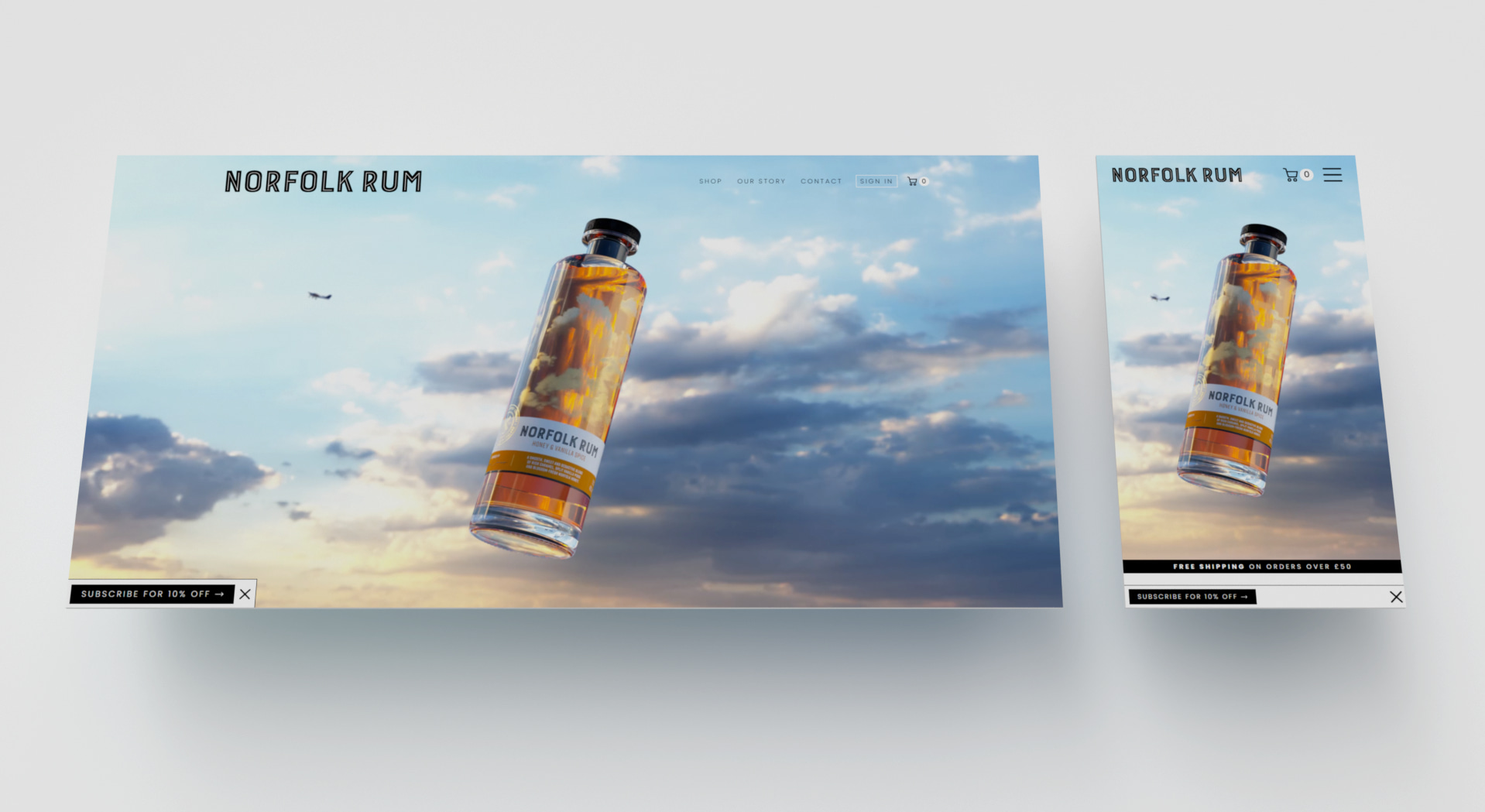
Image credit- Pixelsilo
Read More: A Lookback At the 5 Best Christmas Ad Campaigns of 2023
Benefits of CGI Advertising
Using CGI has certain advantages over traditional media. It must be acknowledged, though, that CGI is sometimes misinterpreted as an expensive medium to use. When one understands the truth, however, this couldn’t be far from reality.
- Cost reduction
- Efficient and Flexible to Produce
- Creating Buzz with Customer Engagement
- Limitless Opportunities
- Cross Platform Compatability
Cost Reduction
Because CGI works with virtual representations created by computer software, it can frequently be more affordable than traditional media. It does away with the necessity for costly location shootings, complicated set designs, and logistical difficulties. Furthermore, a CGI asset can be changed and utilized for future campaigns across all advertising platforms after it has been generated. Time, money, and resources are saved in this way.
Efficient and Flexible to Produce
CGI’s beauty is in its capacity to go beyond what is physically possible. Brands have the ability to dream large and even transform the most incredible concepts into real, visual experiences that pique the interest of their target audiences. Customers can inspect products from all sides with the help of hyper-realistic product renderings, which increases their confidence and sense of trust when making purchases. Building a virtual representation of a product or environment with 3D software offers far greater flexibility and allows for the creation of computer-generated renderings that eliminate the need for post-production retouching to remove unwanted artifacts from the scene.

Image credit- Marketing Mind
Creating Buzz with Customer Engagement
Higher engagement rates are a result of visually compelling content, and CGI elevates the game by enthralling viewers with its otherworldly charm. Social media shares of these eye-catching ads are more likely to occur, greatly increasing brand exposure and reach. Businesses can effectively showcase their offerings by using CGI to create stunning product images, interactive advertisements, virtual videos, and room scenes.
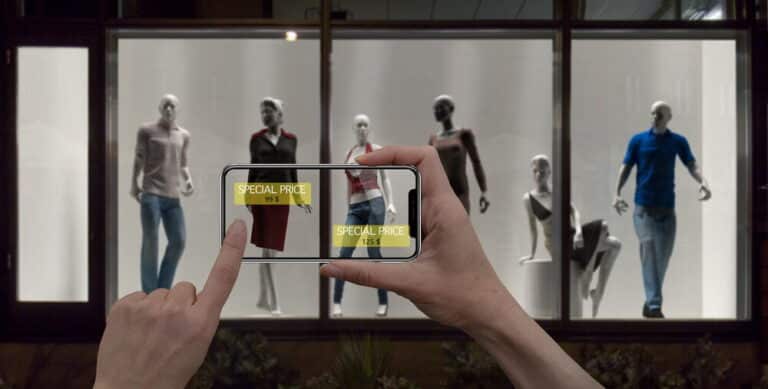
Image credit- Marketing Mind
Limitless Opportunities
There are countless opportunities to quickly and easily create and modify content with CGI. Customers who wish to introduce whole product lines or experiment with various settings throughout the day to test out various settings and environments will find great advantages in this. The only restriction when using CGI is one’s imagination. It could be defying the laws of physics, taking viewers to amazing places, or even breathing life into imaginary characters. The opportunities are endless, enabling the production of genuinely distinctive and engrossing commercials.
Cross Platform Compatibility
The adaptability of CGI is its best feature. The three most often used mediums of interaction are cell phones, tablets, and PCs; a significant portion of user interaction occurs on cell phones. Because audiences prefer familiarity, it is imperative to provide them with identical experiences across all platforms. Once the model is ready, it can be animated or even made into an interactive game using computer-generated imagery (CGI). It can be displayed on any screen, device, or media platform.
Constraints of CGI Advertising
While there are many benefits to using CGI in advertising, there are also potential drawbacks.
- Cost
- Authenticity
- Ethics
Cost
CGI can be costly, particularly when creating intricate or lifelike images. For startups and smaller companies looking to experiment with technology in their advertising campaigns, this can be a barrier.
Authenticity
When CGI is used to produce fictitious images of goods or services, some consumers may believe that the advertisement is deceptive or unauthentic. Furthermore, using CGI excessively can make a scene seem untrue. Advertisers that use traditional filming techniques risk losing the interest of audiences if they grow too accustomed to seeing CGI.
Ethics
The usage of CGI in ads raises additional ethical issues. These could involve the possibility of making false claims or misrepresenting products.
Future Trends in CGI
CGI is turning into a vital tool for virtual marketers as businesses strive to produce more captivating and immersive content. Let’s examine some upcoming changes in CGI technology and trends that digital entrepreneurs should be aware of.
- Real-Time Rendering
- AR (Augmented Reality) and VR (Virtual Reality)
- AI and Machine Learning
Real-Time Rendering
The era of real-time rendering is revolutionizing content creation in marketing. This makes it possible to create interactive and highly dynamic content by enabling the technology of real-time CGI. Real-time rendering enables marketers to create immersive reports, adjust to user interactions, and instantly personalize content.
AR (Augmented Reality) and VR (Virtual Reality)
Virtual reality and augmented reality technologies are increasingly being incorporated into online marketing and advertising campaigns. Marketers use AR and VR to create immersive logo storytelling, digital showrooms, and interactive product reviews. Given the anticipated growth in the use of AR and VR in advertising, it is imperative that digital entrepreneurs investigate the ways in which CGI can enhance these studies.
AI and Machine Learning
The application of CGI by marketers is being revolutionized by AI and ML. With the help of these technologies, business owners can analyze large datasets to gain insights into the behavior and potential of their customers. Additionally, this data can be utilized to produce more specialized and tailored CGI content.

Image credit- Ndigitec
Success Stories
Jacquemus
Internet absurdities are nothing new to Jacquemus! The upscale French fashion brand gained international attention in April when their cult-favorite Bambino purses were spotted wandering the streets of Paris. With millions of interactions, the campaign went viral online and expanded Jacquemus’s reach and brand recognition.
Maybelline
The Maybelline Sky High Mascara Express campaign quickly became viral on social media. Popular forms of transportation were featured in short films posted on Maybelline’s Instagram, with life-size mascara brushes brushing back their oversized eyelashes. Customers became more aware of Maybelline’s new product due to the campaign, which highlighted it.
Barbie
Who can forget the viral Barbie campaign that went viral on the internet? A massive Barbie appeared in front of the Burj Khalifa in Dubai prior to the Barbie movie’s premiere. Despite having nothing to do with Barbie’s official marketing campaign, the video created curiosity and made sure that the film was in everyone’s thoughts.
Just a social media fad?
There is also the belief that CGOOH is a passing trend. Many believe that it is excessive. People are starting to grow tired of the fashion. But is it truly their fault? It was received and embraced so quickly that nobody had a chance to recognize its potential fully. It is necessary to examine the possibility at this point. Nevertheless, savvy brand managers and agencies intend to go beyond this. However, where it goes from here will be what sets it apart.
Some claim that since the field is constantly changing, marketers will need to adapt. Evolution is the obvious solution! There will always be new technologies, but what will set them apart is how skillfully they are used to convey compelling stories and leave an impression.
Final Words
Brand-audience relationships have been transformed by CGI marketing. By telling gripping stories and arousing feelings, CGI produces memorable experiences that have a profound impact on customers. Using CGI in advertising can lead to more creative and appealing ads, as well as the ability to simplify and communicate complex ideas. CGI is expected to become a digital marketing backbone as this revolutionary technology gains traction and creates captivating connections with viewers unlike anything seen before.
Read More: Magna Global’s Hatem Fakih Reveals Strategies for Thriving in GCC’s Media Landscape
Unlocking the Power of AI in Digital Marketing: A Comprehensive Guide
Understanding the Basics of AI in Digital Marketing
To kick things off, let’s demystify what AI truly means in the context of digital marketing. Artificial Intelligence refers to the development of computer systems that can perform tasks that typically require human intelligence. In the marketing sphere, AI is leveraged to analyze data, automate processes, and enhance decision-making.AI-Powered Analytics for Informed Decision-Making
One of the key areas where AI excels is in data analysis. Traditional analytics tools pale in comparison to the capabilities of AI algorithms when it comes to processing vast amounts of data swiftly and extracting meaningful insights. By employing AI-powered analytics, marketers can gain a deeper understanding of consumer behavior, preferences, and trends, enabling more informed decision-making.Personalization Redefined with AI
Personalization has become a buzzword in digital marketing, and AI takes it to the next level. By analyzing user behavior and preferences in real-time, AI can deliver hyper-personalized content and recommendations. This not only enhances the user experience but also increases the likelihood of conversion by presenting users with content that resonates with their individual needs and interests.Chatbots and Customer Engagement
AI-driven chatbots have become invaluable assets in enhancing customer engagement. These virtual assistants can handle customer queries, provide information, and even facilitate transactions – all in real time. The result is improved customer satisfaction and a more efficient use of resources, freeing up human agents to focus on more complex tasks.Revolutionizing SEO Practices
Search Engine Optimization (SEO) is a cornerstone of digital marketing, and AI has brought about a paradigm shift in SEO practices. AI algorithms, such as Google’s RankBrain, are now integral to determining search engine rankings. Marketers need to adapt their strategies to align with these algorithms, focusing on creating high-quality, relevant content that genuinely adds value to users.Automating Marketing Campaigns for Efficiency
Automation is another game-changer in the realm of digital marketing. AI-powered tools can automate various marketing tasks, from email campaigns to social media posting schedules. This not only saves time but also allows marketers to focus on strategy and creativity, leaving the repetitive tasks to the machines.Understanding the Role of AI in Programmatic Advertising
Programmatic advertising, fueled by AI, has transformed the way ads are bought and displayed online. AI algorithms analyze user data to make split-second decisions on ad placements, ensuring that the right ad is shown to the right audience at the right time. This level of precision enhances the effectiveness of advertising campaigns and maximizes return on investment.Overcoming Challenges and Ethical Considerations
While the benefits of AI in digital marketing are substantial, it’s crucial to acknowledge and address the challenges and ethical considerations that come with its implementation. Issues such as data privacy, algorithmic bias, and the potential displacement of jobs should be carefully navigated to ensure responsible and sustainable use of AI technologies.Preparing Your Business for the AI Revolution
As AI continues to evolve, businesses must proactively embrace these technological advancements to stay competitive. This involves investing in AI talent, staying informed about the latest developments, and continually reassessing and adapting digital marketing strategies to align with the capabilities of AI.Conclusion: The Future is AI-Driven
In conclusion, unlocking the power of AI in digital marketing is not just a trend; it’s a necessity for businesses aiming to thrive in the digital age. From personalized user experiences to data-driven decision-making, AI has the potential to revolutionize every aspect of the digital marketing landscape. Embracing this technology and understanding how to leverage it effectively will undoubtedly set businesses on the path to success in the ever-evolving world of digital marketing.Read More: The Role of AI in Personalized Advertising

Ali Masthan
Google Search | Display Ads | DV 360 | GAM 360 | Paid Social | Media Planning and Strategy
With over 12 years of experience in media planning, strategy, and content marketing, Ali Masthan is a digital marketing veteran passionate about helping businesses build ethical and sustainable customer relationships. He believes that transparency, respect, and quality content are key to earning trust and achieving long-term success. Follow Ali for insightful tips and strategies to navigate the ever-evolving digital landscape.
Merkle Sokrati’s Kunal Kapoor: Charting Unseen Horizons in Digital Marketing
Kunal Kapoor, Vice President of Client Engagement and Delivery at Merkle Sokrati, a seasoned professional with 16+ years in Marketing, Sales, Business Development and Client Strategy, shares valuable insights in this exclusive interview.
He highlights the strategic alignment of campaign goals with business objectives and addresses ethical considerations in AI for digital marketing. His perspectives offer a comprehensive view of navigating the dynamic advertising landscape.
How has your extensive 15-year experience in the advertising industry shaped your illustrious professional journey? Could you share your background and noteworthy milestones that you encountered?
I earned my Masters in Business Management from BIT Mesra, Ranchi, in 2007, marking the commencement of my 16+ years of professional journey. In the first half of my career, I worked with prominent media houses and telecommunications giants such as HT Media, Jagran Group, and Tata Docomo. During this period, I learnt about B2C marketing, delving into the practical applications of the 4 Ps of marketing – Product, Price, Promotion, and Place. My expertise centered around new media, mobile marketing, and convergence marketing.
At the age of 28, I ventured into entrepreneurship, serving as the Chief Marketing Officer for a startup for nearly 5 years, specializing in mobile marketing. Following the downturn in the telecom industry in the mid-2010s, I successfully transitioned to core digital marketing. Over the past 3 years, I’ve been a vital part of Merkle Sokrati (dentsu India), leading the client engagement cluster for the large clients’ portfolio in my role as Vice President – Client Engagement.
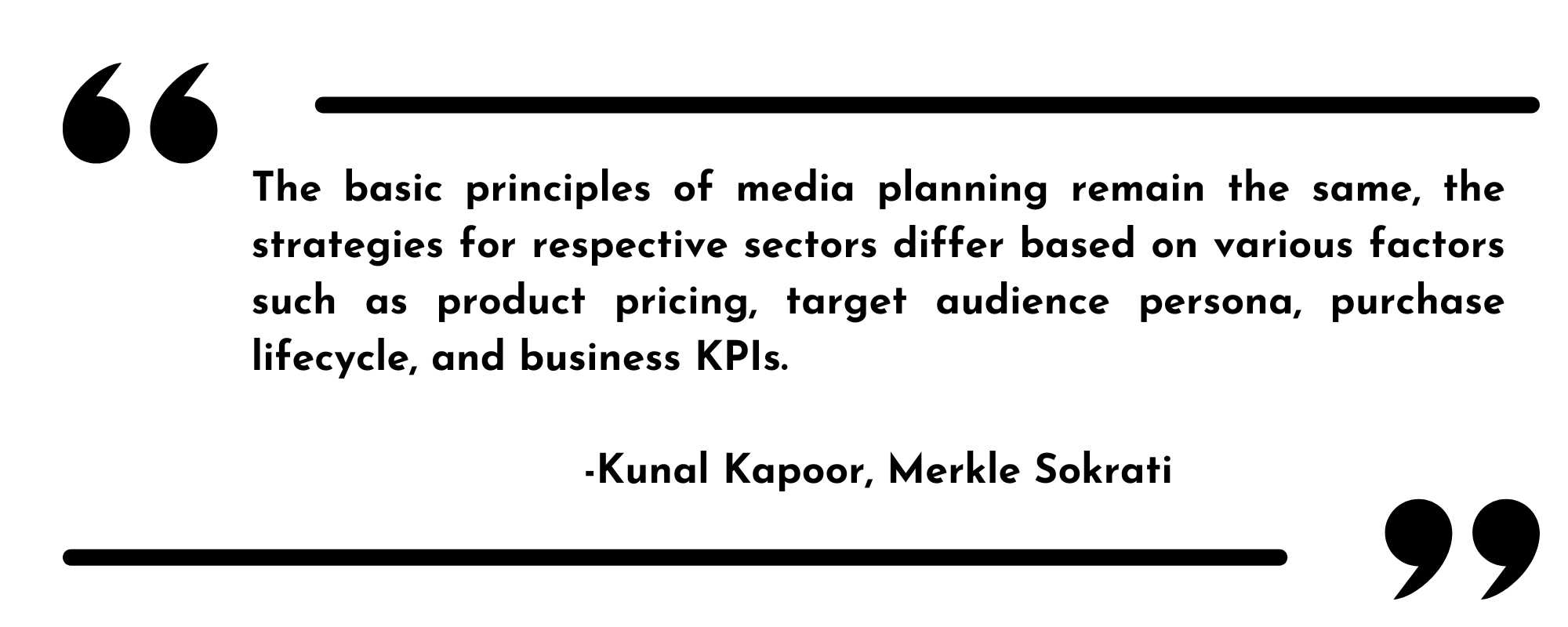
You manage a wide range of clients from Consumer Durables to EdTech to Healthcare. How do you align your strategies to vary with regard to different sectors and at the same time fulfil client objectives and expectations?
Although the basic principles of media planning remain the same, the strategies for respective sectors differ based on various factors such as product pricing, target audience persona, purchase lifecycle, and business KPIs. Taking these factors into consideration, the media mix and strategy are formulated with a comprehensive funnel approach – employing different strategies for different stages of the funnel: top (awareness), middle (consideration), and bottom (conversion). It also necessitates a clear definition of short-term and long-term business goals by the brand custodians. Without such clarity, the goalposts may shift unpredictably, potentially disrupting campaign stability and impeding sustainable growth.
Everyone is rushing to adopt AI in their businesses. What according to you are some of the ethical implications of using AI in digital marketing? How do you think AI will help in customer engagements and the marketing industry overall?
The ethical implications of AI in digital marketing revolve around principles such as fairness, privacy, and accountability. To ensure adherence to these principles, brands and agencies must actively work towards implementing ethical frameworks and establishing monitoring mechanisms. It is crucial for them to take responsibility for the potential impact AI can have on society and customers.
Despite these concerns, AI brings forth numerous benefits. It aids digital marketers in enhancing campaign accuracy by providing data-driven insights that are challenging to extract manually. Additionally, it contributes to increased productivity by saving time spent on mundane tasks like trend analysis and campaign optimization. This time-saving aspect allows digital marketers to focus on innovation, experimentation, and ideation.
Moreover, AI plays a pivotal role in deepening customer engagement through activities such as personalization at scale, personalized re-marketing, cross-channel targeting, and data-driven decision-making based on behavioral trends and funnel-level analysis.
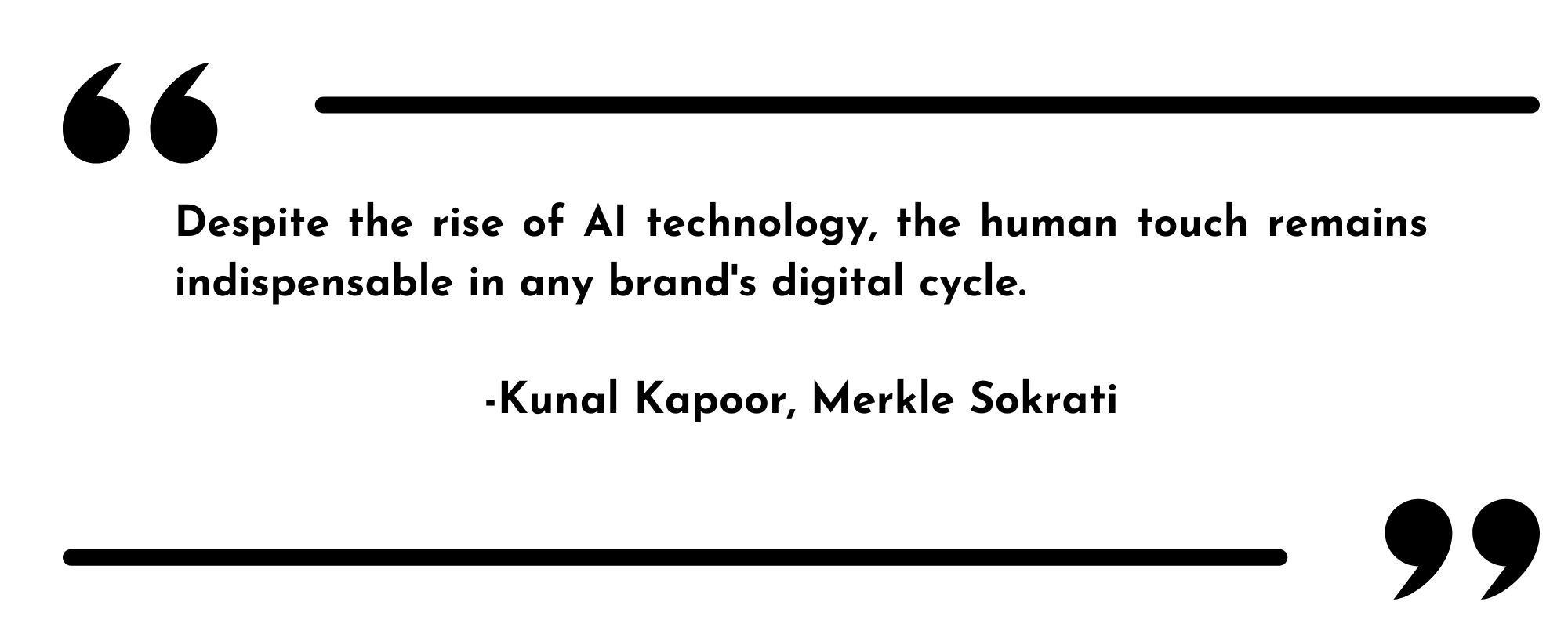
Adding on to the above question, with the rise of voice assistants like Alexa, Google Assistant etc., people are shifting towards voice search. Dentsu has been focusing on voice search assistant, or VSO strategies for geographical targeting. Can you tell us what are some of the strategies you use?
Voice search results differ from traditional search outcomes due to their conversational nature, focusing on answering specific questions rather than presenting a list of results. Consequently, Voice Search Optimization (VSO) requires a distinct approach compared to traditional SEO. At Dentsu, our VSO strategies concentrate on identifying relevant long-tail keywords for your business and seamlessly incorporating them into your website content. Key strategies include:
- Creating locally relevant content: Enhance your local voice search visibility by generating content tailored to local audiences.
- Claiming and optimizing business listings: Ensure your business information is accurate and up-to-date, maximizing visibility in local search results.
- Including natural language in content: Address common questions and concerns of local customers through the use of natural language in your content.
- Utilizing schema markup: Provide additional context about your website’s content to search engines, enhancing visibility in voice search results.
- Mobile optimization: Prioritize mobile optimization, considering that voice search is predominantly performed on mobile devices. This involves ensuring your website is mobile-friendly, optimizing website speed, and implementing responsive design.
Digital media is widespread in this time and age. How do you ensure maintaining the human touch while curating strategies? How important is it to have a human touch in the advertising realm?
Despite the rise of AI technology, the human touch remains indispensable in any brand’s digital cycle. The reason is machines excel at analyzing data and identifying patterns, but it’s the human touch that infuses creativity and emotions into digital campaigns and strategies. For instance, machines can adeptly track customer touchpoints based on call-to-action (CTA), but they can’t interpret how an audience is likely to react emotionally to an ad or a campaign.
Hence, the winning formula for any brand’s digital campaigns lies in emotion-driven content generation complemented by action based on data insights provided by AI technologies. We contribute flexibility and creativity to the digital world while interpreting changes in consumer behavior. In crafting campaigns for clients, we weave unique and original narratives designed to resonate with their target audience. By marrying data patterns with human input derived from consumer behavior, we ensure effective outreach to the right audience personas.
Can you share some examples of successful campaigns that you carried out at Dentsu? How did you implement key learnings in your future campaigns?
When a digital marketer engages in crafting a digital campaign, there are numerous factors and elements to monitor. These include, but are not limited to, audience targeting, marketing mix, creative assets, landing page design, user journey, and call to action. As campaigns unfold, they accumulate insights through data and platform algorithms. Our ongoing effort is to pinpoint the sweet spots—different combinations of the mentioned factors that prove effective for the brand in terms of scale and Customer Acquisition Cost (CAC). This iterative process allows us to build on successful elements, fostering sustainable growth for clients over months or years.
At Sokrati, we collaborate with leading brands across diverse sectors such as E-Commerce, Retail, BFSI, Automobile, and Fashion. Notably, for a prominent EV brand, our SEO best practices and innovative strategies led to the ranking of 100+ branded keywords in the 1st position on Google SERP within three months of launch. For a BFSI client, a major bank, we achieved a remarkable 314% growth in new account opens month on month, coupled with a 76% reduction in CAC. This success was attributed to full-funnel optimization, audience expansion, leveraging high-intent users, and continuous product enhancement.
Another noteworthy campaign involved a leading matrimonial brand, where the primary goal was to boost brand awareness and consideration through Programmatic Media and Display Campaigns. Through rich media formats, we achieved a 4.5x increase in engagement while simultaneously reducing CPCs by 65%.
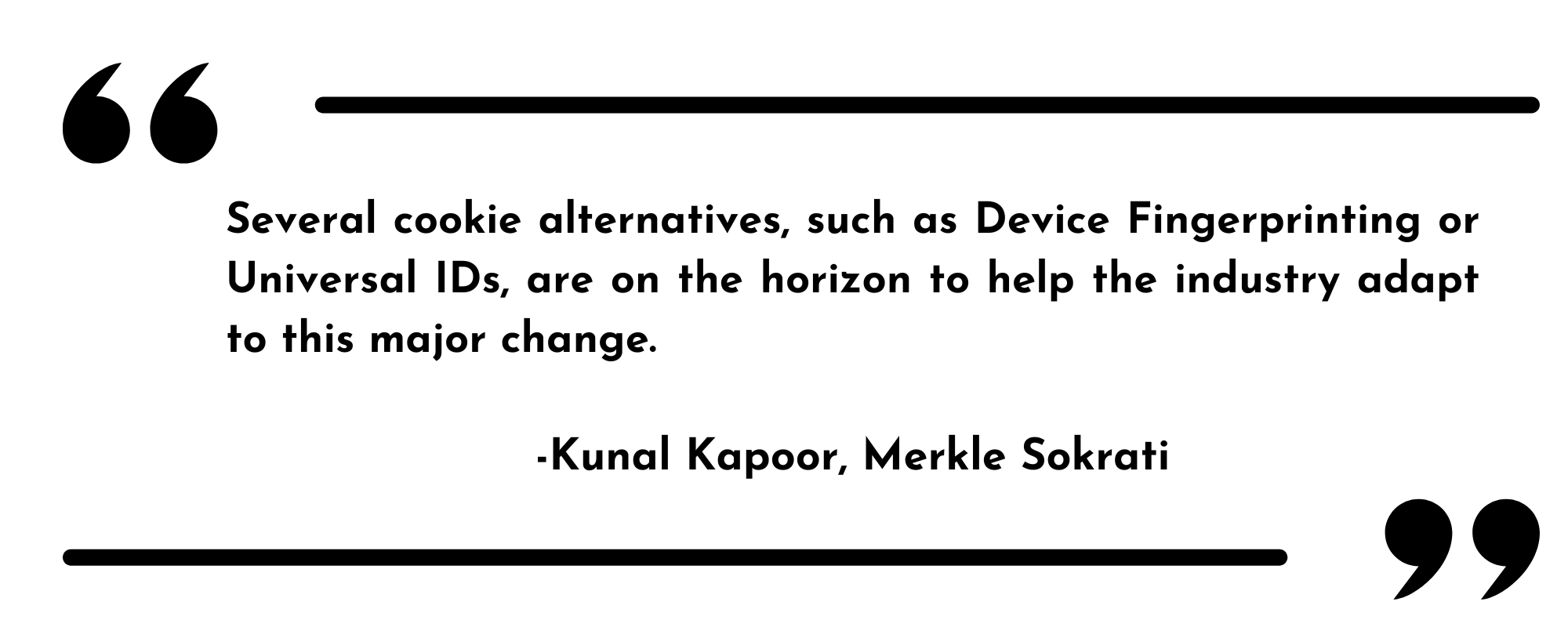
Google’s upcoming third-party cookies deprecation is set to drastically change the advertising landscape. What changes, good or bad, do you think it will bring to the programmatic and media landscape?
The absence of third-party cookies will make it challenging for advertisers to track and deliver targeted ads across the web. This could lead to less effective advertising and a potential decrease in the overall size of the digital advertising industry. Publishers will also face difficulties monetizing their websites as the ability to sell targeted advertising through cookies diminishes. In response, publishers will need to evolve and launch their own ad solutions.
Several cookie alternatives, such as Device Fingerprinting or Universal IDs, are on the horizon to help the industry adapt to this major change. Businesses relying on cookies for digital advertising will need to transition towards zero-party data to stay relevant in a post-cookie era. Zero-party data is information voluntarily shared by users with businesses, including preferences, interests, and contact information. It is more accurate, reliable, and privacy-friendly. With rich databases of first-party data, media companies and publishers will be well-positioned to succeed in a cookie-free world.
How do you determine the campaign’s effectiveness? What are the certain characteristics or key objectives that you look for?
Following the thumb rule, campaign goals align with the client’s business objectives. Campaign effectiveness is gauged by how well the strategy and results contribute to achieving the brand’s business goals. To measure campaign success, tracking interactions and conversions across digital channels is essential, attributing these conversions to the campaign.
Before diving into measurement, it’s crucial to define business objectives, establish campaign goals and targets, identify the target audience, and set Key Performance Indicators (KPIs). Common KPIs include Conversion Rate, Unique Visitors, Bounce Rate, and Page Views. The campaign’s outcomes are then tracked and measured using robust analytics tools like GA, AMC, HubSpot, etc.
Havas Acquires EPROFESSIONAL, a Hamburg-based Digital Performance Marketing Agency
Havas has declared the strategic acquisition of EPROFESSIONAL, a digital performance marketing agency located in Hamburg. This move will broaden the company’s offering of premium performance marketing services and solidify its standing as the top agency in Germany. EPROFESSIONAL will become a part of the Havas Media Network organization while maintaining its independent branding.
EPROFESSIONAL, a Hamburg-based digital performance marketing agency
EPROFESSIONAL, which was established in the attic in Hamburg in 1999, has gained a reputation for being a leader in the performance marketing industry and a supplier of unique solutions. The company is a skilled collaborator in all facets of digital marketing, including social media, multichannel tracking, SEO/SEA, and more. For many years, EPROFESSIONAL has worked well with clients like Vodafone, L’Oréal, and Hapag Lloyd.
Management Roles
Henner Uekermann, who will take on the position of Managing Director, will oversee EPROFESSIONAL alongside Tim Christiansen. In parallel, Henner will carry on in his capacity as Managing Partner of Arena Media, a German agency brand that functions as a second brand under the Havas Media Network, alongside Havas Media.
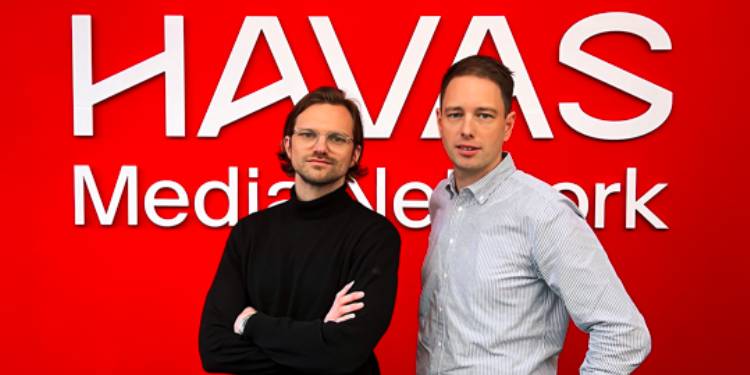
Left-Tim Christiansen; Right- Henner Uekermann; Image credit- MediaNews4U
Read More: Havas ME’s Alejandro Fischer: Shaping Advertising’s Landscape with Tech Brilliance
Here’s what they said
Yannick Bolloré, Chairman and Global CEO, Havas said,
We are thrilled to welcome EPROFESSIONAL to the Havas family. By combining EPROFESSIONAL’s expertise with our group’s local and global resources, we further strengthen Havas Media Network in Germany, ranked “dominant” in the latest RECMA report, and are better equipped to deliver best-in-class digital marketing solutions to our clients. After making investments in the UK, Canada, and India, our objective is to further expand our digital performance capabilities worldwide.
Sven Traichel, CEO of Havas Media Germany, explained
The focus has always been on making strategic and, above all, locally relevant investments. The acquisition of EPROFESSIONAL is such an investment to expand our digital expertise and offer customers even greater added value. The merger will enable both Havas and EPRO customers to implement successful marketing measures at all touchpoints of the entire customer journey.
The Managing Director of EPROFESSIONAL, Tim Christiansen, added,
Havas is an ideal partner for us. We share the same vision of offering customers innovative and customized solutions. In addition, the chemistry on a human level is outstanding.
Henner Uekermann, approaching his new role with great enthusiasm commented,
The integration of EPRO into the Havas Media Network and the further development of Arena Media in Germany are two wonderful tasks for me. With EPRO’s technological solutions and Havas Media’s 360° approach, we can implement holistic strategies from the first touchpoint to conversions and achieve our clients’ growth targets effectively and efficiently. By combining our competences, we can offer our clients an absolute state-of-the-art product from which we expect our agency to continue to grow in the coming years.
Read More: Swiggy To Continue With Havas Media Group India for Media Duties
In Conversation with Mindshare’s Amit Lall: Mastering Digital Dynamics
Amit Lall, Principal Partner at Mindshare, brings two decades of expertise in telecom, technology, and digital planning. He oversees digital strategies for diverse sectors, prioritizing consumer-centric solutions powered by data.
In this exclusive interview, his insights will unveil the evolving media landscape, technological adaptations, and future trends, offering readers a glimpse into transformative digital initiatives propelling clients to sustainable success.
As an accomplished expert with over two decades of experience in this industry, can you walk us through your background and your experience working as the Principal Partner / Digital Lead – Client Leadership at Mindshare?
Mobile and technology have been my lifelong passions. I embarked on my professional journey with the telecom industry, initially in sales and later transitioning into product management, eventually finding my way into the realm of digital planning. This path has been characterised by a multitude of highs and lows, each contributing to my growth. Presently, I serve as a Principal Partner at Mindshare, where I oversee digital for West 1 cluster. The continually evolving digital landscape, coupled with the increasing influence of cutting-edge technologies like AI and ML, ensures that my work remains both exhilarating and challenging.
A wide range of clients come under your wing, from Fintech to Telecom to Fashion. How do ensure that the strategies employed for these sectors resonate with the specific audiences? Are there different digital strategies for each of them and if so, how do they differ from each other?
In the ever-evolving realm of brand management, a one-size-fits-all solution is elusive. Crafting effective strategies relies on a meticulous understanding of the specific objectives tied to the media task at hand. Our approach is tailored to align with the unique goals each brand aspires to achieve. Throughout the formulation process, we prioritize understanding the brand’s position in the consumer funnel. Whether the brand is emerging, established, or grappling with low consumer consideration, recognizing the brand’s needs is vital. We require absolute clarity on these points before delving into the realm of solutioning.
Furthermore, comprehensive details on the brand, its category, and its competitive landscape are indispensable. The better we know your brand, the more refined our solutioning becomes. These insights play a pivotal role in shaping communication and deployment strategies. Our solutioning is focused on an an audience-first approach, supported by robust data, powerful insights, and compelling content. By addressing these critical questions and staying committed to an audience-centric approach, we ensure that our solutions are not just effective but also resonate with the core essence of the brand.
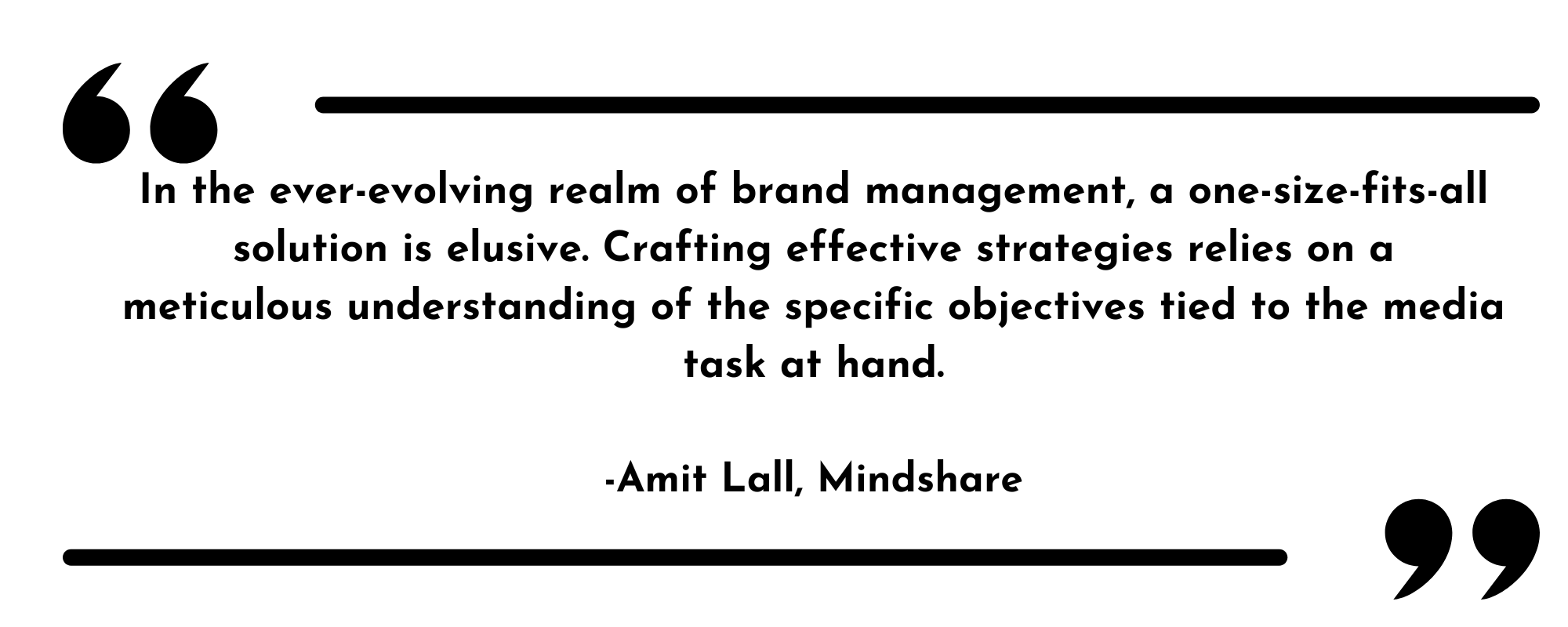
In the context of cutting-edge technologies such as Generative AI, Metaverse, and 5G, how have you prepared yourself to embrace them? How have they disrupted the advertising industry?
To be transparent, navigating the multitude of changes in the tech space, whether in Generative AI, the Metaverse, Blockchain, or Web 3.0, can indeed be challenging. However, working in the digital industry provides a unique advantage, offering exposure to numerous startups and tech enthusiasts. This exposure allows firsthand experiences with technologies and helps understand their true potential, which can be leveraged for user experience, engagement, and performance enhancement.
At Mindshare, we’ve always championed the ethos of leveraging technology and staying at the forefront for our clients. These cutting-edge technologies are seamlessly integrated into our tactical deployment strategies, contributing significantly to our client’s success by delighting their consumers. A testament to this commitment is our pioneering adoption of the Metaverse for clients in the auto and beverages categories. Additionally, we boast numerous success stories stemming from the strategic deployment of AI/ML tools, resulting in superior media outcomes that have played a pivotal role in driving growth for our clients.
Your 20 years of experience in this industry must have given you a unique perspective on the changes and evolution of this industry. Do you see any emerging trends? What preparations do you have in place to face them?
Over the past two decades, we’ve witnessed a remarkable transformation in the media landscape. What was once at the periphery of media choices is now inching towards dominating it. The sheer scale and technological advancements in the digital realm have not only propelled its growth but also led to a significant reshaping of budget allocations. Digital media is not only growing but also taking money away traditionally allocated to TV through connected TV, OOH through DOOH, and radio through streaming music apps.
With continuous push and support from the government, digital penetration is at an all-time high. This has translated into massive adoption of smartphones, complemented by cheap data plans to drive usage and high-speed connections across 4G and 5G networks for a superior experience. As these factors converge, we foresee our future trends being dominated by big query data, driven by the prowess of Generative AI and ML.
AI and ML are not only about automation and predictive analysis but also about multiple messaging or personalization at scale. The adoption of Connected TV (CTV) is poised to outpace growth projections at an accelerated pace. Furthermore, we anticipate that full-funnel deployment will become the new norm, as advertisers seek comprehensive strategies covering every stage of the consumer journey. Lastly, I believe retail media will continue its dominance, reflecting the evolving dynamics of consumer behavior and preferences.
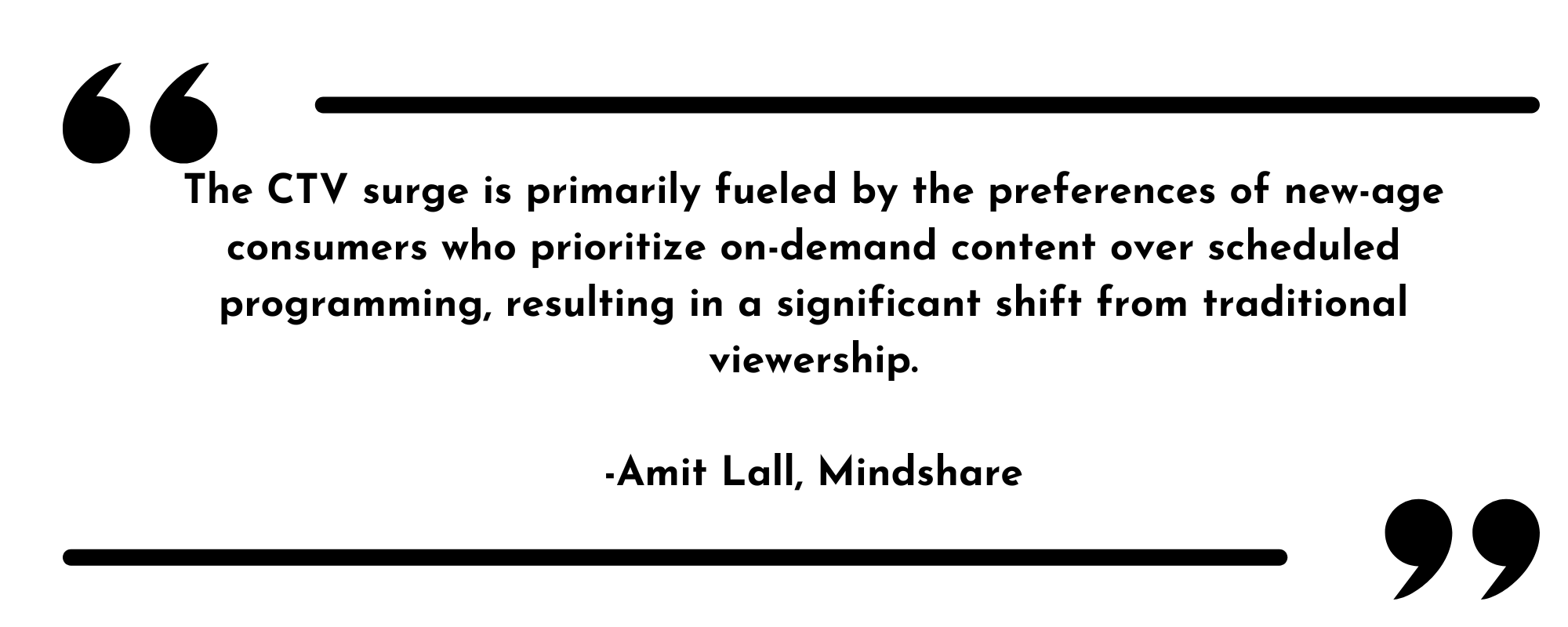
Consumer viewership habits have also evolved over the period of time. What metrics and goals do you look to accomplish for CTV vs Mobile advertising? Can you throw some light on the CTV advertising landscape in India?
India’s CTV ecosystem is experiencing unprecedented growth, reaching 33 million households in July 2023, a substantial increase from the 11-12 million recorded in January 2022. Projections from the GroupM Finecast report suggest a trajectory toward 50-60 million households by the end of 2025. This surge is primarily fueled by the preferences of new-age consumers who prioritize on-demand content over scheduled programming, resulting in a significant shift from traditional viewership. The convenience of accessing content anytime, anywhere has prompted a surge in viewers cutting the cord and embracing CTV. For advertisers, the appeal lies in the larger screen and premium ad environment, translating to a more impactful reach, with key metrics centered around impressions, viewability, and overall reach.
Digital marketing is a rapidly evolving landscape in which, Programmatic digital out-of-home (pDOOH) seems to be the new trailblazer marketing strategy everyone wants to undertake. What are your thoughts on this?
Digital OOH has changed the role of the OOH medium. From just being a ‘reminder’ medium, DOOH has also made it a medium to enhance imagery. The OOH industry has historically grappled with challenges related to transparency and measurement. However, with the emergence of pDOOH, both of these concerns are being addressed. Unlike the static-only medium, pDOOH provides a plethora of options, allowing you to play with formats such as video, staticads, and GIFs, enabling sharper targeting, and in some cases, even retargeting your consumers. These possibilities make this medium more effective.
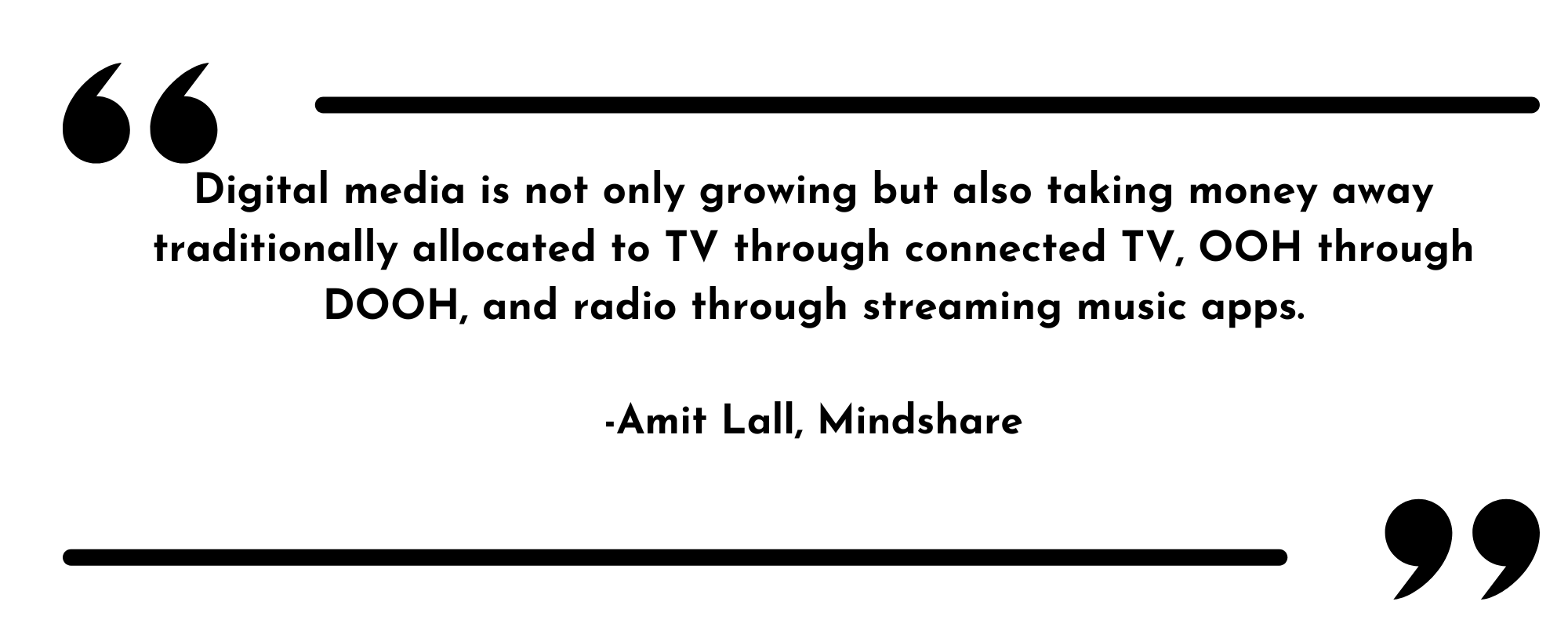
Have you ever run a marketing campaign that presented an unexpected challenge or outcome? How did you implement the lessons learned?
All campaigns are unique and designed with business objectives in mind. Based on the objectives, our solution isalways consumer-centric, powered by data. To drive engagement, we use dynamic creatives at scale, keeping the consumer’s journey in mind.
Any words of advice you would like to share with the young professionals about navigating through the ever-evolving marketing landscape?
My advice to young professionals is to stay curious and keep upskilling to adapt and stay relevant in the ever-changing media landscape.
Social Beat Secures D2C Digital Responsibility for Mankind Pharma
After a competitive selection process involving multiple agencies, Social Beat, a digital marketing agency, was awarded the D2C digital responsibility for Mankind Pharma, a pharmaceutical company. A major advancement in Mankind Pharma’s digital marketing initiatives to fortify its online presence and interact with a broader audience will be achieved through collaboration with Social Beat.
Social Beat’s digital responsibility for Mankind Pharma
Mankind Pharma, a company renowned for its dedication to offering top-notch medical solutions, has selected Social Beat as its digital partner. It will help in promoting sales on the brand’s website and foster growth in the digital arena. For Mankind Pharma, Social Beat will develop and implement comprehensive digital marketing strategies. These strategies will utilize a range of platforms, including social media, search engine optimization (SEO), content marketing, and more. Mankind Pharma wants to reach out to customers in various geographies and demographics.
Read More: Omnicom Acquires Flywheel, the Pioneering Digital Commerce Company
Here’s what they said
Suneil Chawla, co-founder of Social Beat said,
We are delighted to be chosen as the digital marketing partner for Mankind Pharma. This collaboration presents a fantastic opportunity to leverage our expertise in digital marketing to help Mankind Pharma reach new heights in the online landscape. We look forward to crafting a highly impactful website and campaigns that resonate with Mankind Pharma’s objectives and growth.
Speaking about the partnership, Joy Chatterjee, AVP at Mankind Pharma, added,
In today’s digital age, it is imperative for us to have a strong online presence and engage effectively with our customers. Social Beat’s expertise in the digital marketing arena and their proven track record make them the ideal partner for our digital journey. We are excited about the opportunities this collaboration will bring and are confident that together, we will achieve great success.
Read More: Mindshare and Scope3 Develop Emission Scorecard for Digital Campaign

